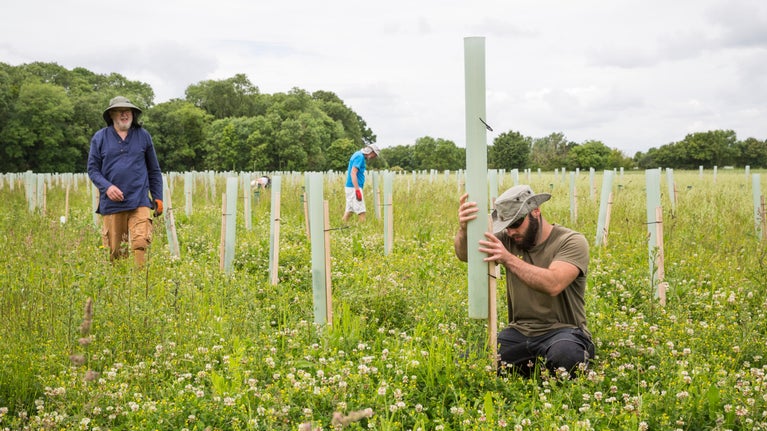
Tackling climate change
Uncover how we’re responding to the changing climate at places in our care.

People have always harnessed the power of the sun's rays and solar energy continues to play an important role at the places we care for. Whether we're using state-of-the-art solar technology to bring an ancient ship burial site out of the Dark Ages or heating an 18th-century castle, the sun is helping us to be more sustainable.
Solar panels use the sun’s rays to generate electricity. This may be used at the place that they’re fitted, or it can be exported to the national grid for use elsewhere. Typical energy generation might be around 300kWh annually per panel.
The significant 7th-century burial site at Sutton Hoo has been brought into the 21st century with a state-of-the-art solar energy system. The new visitor centre buildings have been furnished with 172 high-efficiency solar panels, generating 42,000 kilowatt hours of electricity each year – that's enough to power ten UK homes!
Penrhyn has nearly half an acre's worth of solar panels working hard to help reduce the castle's carbon footprint. Each of the castle's 100 rooms are heated by green energy, with nearly 70% of the site's energy needs being met by its solar panels and biomass boiler.
Staying true to the spirit of invention and creativity at Penrhyn Castle, we’re also working with scientists from Bangor University and Trinity College Dublin to trial a heat capturing system that reuses heat from waste water being flushed down the drains.
Discover more about renewable energy at Penrhyn Castle
Anglesey Abbey's solar panels generate enough electricity to make two million cups of tea a year. Almost all of the energy generated is used in the visitor centre and is enough to meet the average energy needs of 11 UK homes. Generating this power has meant Anglesey Abbey has been able to reduce its emissions of carbon dioxide by 20 tonnes each year, alongside saving money on electricity bills; this means that more funds can go straight into vital work conserving the estate and collection.
Find out more about tackling climate change at Anglesey Abbey
Our renewable energy projects reduce our dependence on fossil fuels and our impact on climate change. What's more, the money we save by being more energy efficient goes towards vital conservation work that protects the countryside and the wildlife that depends on it.
This ensures that the special places in our care will remain beautiful and full of life for future generations to enjoy.

Uncover how we’re responding to the changing climate at places in our care.
From tips on saving water to combatting plastic pollution, learn more about our work to protect precious coasts and rivers for wildlife and people, and what you can do to help.

Discover more about the National Trust’s role at COP26 in Glasgow and how you can help tackle the climate crisis.

Discover which of the places in our care generate their own hydroelectricity, from a 19th-century 'smart home' in Northumberland to a state-of-the-art water turbine in scenic Snowdonia.

Find out how we're planting and establish 20 million trees that will absorb carbon and help tackle climate change.
Discover how biomass boilers are being used by some of the special places in our care to provide heat and hot water whilst also reducing their carbon footprint.

Using heat pumps to provide greener energy at the places in our care, from castle gardens to historic mansions, is helping to reduce our carbon footprint.
